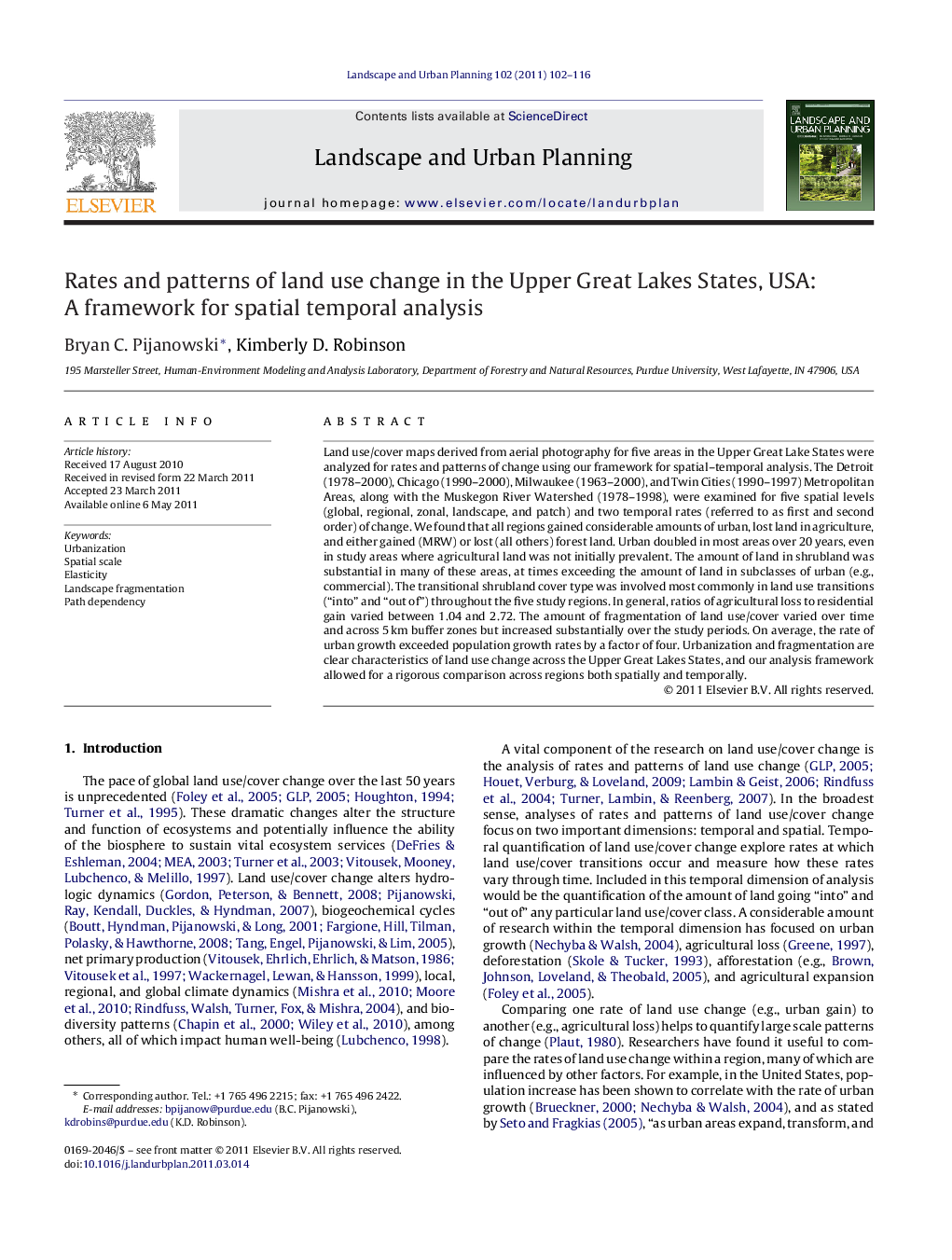| کد مقاله | کد نشریه | سال انتشار | مقاله انگلیسی | نسخه تمام متن |
|---|---|---|---|---|
| 1049768 | 945637 | 2011 | 15 صفحه PDF | دانلود رایگان |

Land use/cover maps derived from aerial photography for five areas in the Upper Great Lake States were analyzed for rates and patterns of change using our framework for spatial–temporal analysis. The Detroit (1978–2000), Chicago (1990–2000), Milwaukee (1963–2000), and Twin Cities (1990–1997) Metropolitan Areas, along with the Muskegon River Watershed (1978–1998), were examined for five spatial levels (global, regional, zonal, landscape, and patch) and two temporal rates (referred to as first and second order) of change. We found that all regions gained considerable amounts of urban, lost land in agriculture, and either gained (MRW) or lost (all others) forest land. Urban doubled in most areas over 20 years, even in study areas where agricultural land was not initially prevalent. The amount of land in shrubland was substantial in many of these areas, at times exceeding the amount of land in subclasses of urban (e.g., commercial). The transitional shrubland cover type was involved most commonly in land use transitions (“into” and “out of”) throughout the five study regions. In general, ratios of agricultural loss to residential gain varied between 1.04 and 2.72. The amount of fragmentation of land use/cover varied over time and across 5 km buffer zones but increased substantially over the study periods. On average, the rate of urban growth exceeded population growth rates by a factor of four. Urbanization and fragmentation are clear characteristics of land use change across the Upper Great Lakes States, and our analysis framework allowed for a rigorous comparison across regions both spatially and temporally.
► Five spatial and two temporal scales are necessary for a thorough analysis of land use/cover change within and across regions.
► Urban growth rates exceeded population growth by a factor of four in the Midwestern Metropolitan study regions, with urban doubling over 20 years.
► Transitional shrubland underwent the most land use transitions (both “into” and “out of”) when compared to other land use/cover classes throughout the study regions.
► Ratios of agricultural land loss to residential land gain tended to vary between 1.04 and 2.72.
► All study regions experienced considerable amounts of urban growth, agricultural land loss, and gain (MRW) or loss (all other study area) of forested land.
Journal: Landscape and Urban Planning - Volume 102, Issue 2, 30 August 2011, Pages 102–116